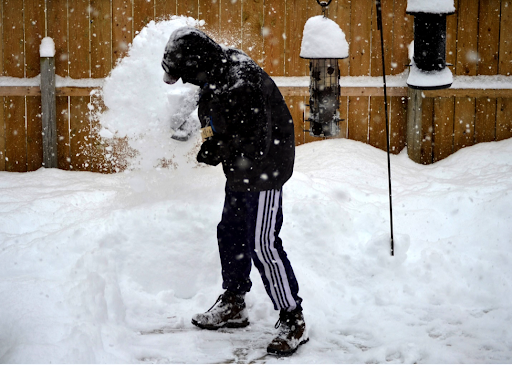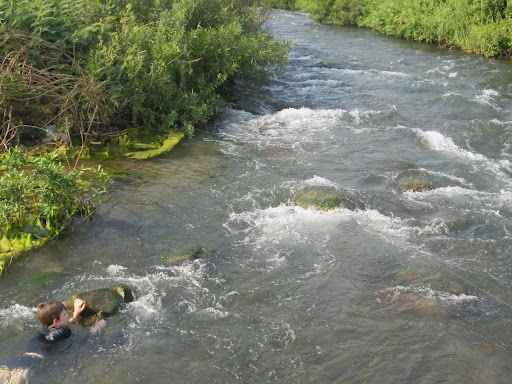How to Save Your Spine While Shovelling the Snow

Besides the colder temperatures and snowfall, the winter season also brings with it a dreaded duty for home owners – shovelling the snow. Clearing your driveway and sidewalk of lightweight fluff may not seem difficult, especially when you have a trusty shovel to help speed up the job. But in reality, this physically exhausting and time-consuming chore will make your aching body question whether winter is actually a wonderland.
Statistics
During the winter, the number of people who end up in the hospital for weather-related injuries spikes up. In addition to hurt backs, patients also suffer from hand, arm, and head fractures due to slips and falls, and heart attacks merely from shovelling the snow.
As a result, studies have found that an average of 11,500 individuals are treated for snow shovelling-related emergencies every year. 54% of these cases involve overexertion of the muscles and bones, while slips and falls comprise 20% of the accidents. Furthermore, 55% of those admitted to the hospital were diagnosed with sprains and strains, while another 34% suffered from lower back injuries.
Reasons behind injury while snow shovelling
Snow shovelling is considered an isometric activity, comparable to weightlifting. Clearing the seemingly light fluffy mounds of snow on your house’s exterior pathways is just as intense as lifting hundreds of pounds in the span of an hour. In addition, the arm work involved in snow shovelling is much more demanding than leg work. Thus, just as it is with any exercise, if it is not conducted properly, the likelihood of injury rises.
Furthermore, doctors find that those who shovel the snow rarely warm up beforehand. Their bodies are not physically prepared to take on such a highly strenuous task, hence get overwhelmed faster. People also fail to take breaks while shovelling, and try to get the job done in one continuous shot. This overexertion for a long period of time heightens the chance of back spasms, alignment issues and other muscle pain.
The repetitive twisting and lifting in this task ultimately leads to severe strains on different parts of the body. According to the Orthopedic Institute of Pennsylvania, it only takes one muscle pulled the wrong way to trigger immobility in your back, neck or shoulders.
Tips on how to prevent injury while shovelling the snow
In order to better prepare your body for this winter chore and avoid sending yourself to the hospital, the Ontario Chiropractic Association suggests the following preventative measures:
- Warm up. Before you start shovelling, use five to 10 minutes to warm up and stretch your back, shoulders, arms, and legs. Taking a brisk walk is also good preparation for the job to increase blood circulation. Doctors say that failing to warm up before shovelling show could harm cold muscles and stiff joints. This way, your joints will be physically ready for the long strenuous activity to follow.
- Use the right shovel. Make sure you choose a lightweight push-style shovel. A heavier shovel would add extra weight to the already heavy snow load. Also, get a shovel with a curved, ergonomic handle, which will prevent less strain throughout your back and make it easier to push the snow.
- Wear proper footwear. Use boots that will provide good traction on wet or icy surfaces, and prevent slipping and falling. “Proper footwear will also help stabilize your legs and avoid excess pressure travelling through your back,” says chiropractor Dr. Azad.
- Don’t let the snow pile up. Avoid waiting for the snowfall to halt. This would leave you with more work to do in the end. Clear small amounts of snow on a frequent basis, instead of removing it all at once which would be more strenuous and time-consuming. This will lessen the likelihood of spraining and straining your muscles.
- Push, don’t throw. Pushing the snow to the side will lessen the amount of lifting you have to do, in turn reducing the likelihood of back, shoulder, or arm pain. However, if throwing the snow is necessary, avoid twisting and turning. According to Dr. Azad, “twisting puts a lot of strain through the lower back and the discs… You can strain the muscles, and ligaments, and end up with a severe herniated disc that puts a lot of pressure on your nerves. It’s very painful, and could require surgery.” Position yourself so you can throw the snow straight into the pile, instead of from an awkward angle.
- Alternate between arms. Dr. Azad recommends switching back and forth, instead of using one arm all throughout to dominate the pushing and lifting motion. This will prevent only one side from getting tight and causing a pain imbalance.
- Bend your knees. With your knees, leg and arm muscles providing support, the pushing and lifting motion will be much easier on the back. But remember to keep your back straight.
- Take breaks. Don’t try to clear all the snow away from your driveway and house’s exterior in one go. Snow shovelling is not a task we are used to doing everyday, so breaking the job up into “multiple small sessions lets your body get used to [the] motion,” says Dr. Azad. Once you feel tired, short of breath, or any chest or back pain, stop shovelling immediately and take about 15 to 20 minutes to rest. This will not only give your muscles time to relax, but also reduce the chances of cardiac arrest.
Finally, if you have heart problems, back problems, and/or are over the age of 55, it is best recommended to avoid shovelling the snow yourself. Instead, pass the responsibility to someone else, such as a neighbour, older child, or a for-hire snow shoveler. What matters is saving your spinal cord and other body parts from accidents, to ensure a smooth and less stressful winter season. If you have been injured while shovelling the snow, contact us today to learn about how we can help you receive the compensation you deserve.













